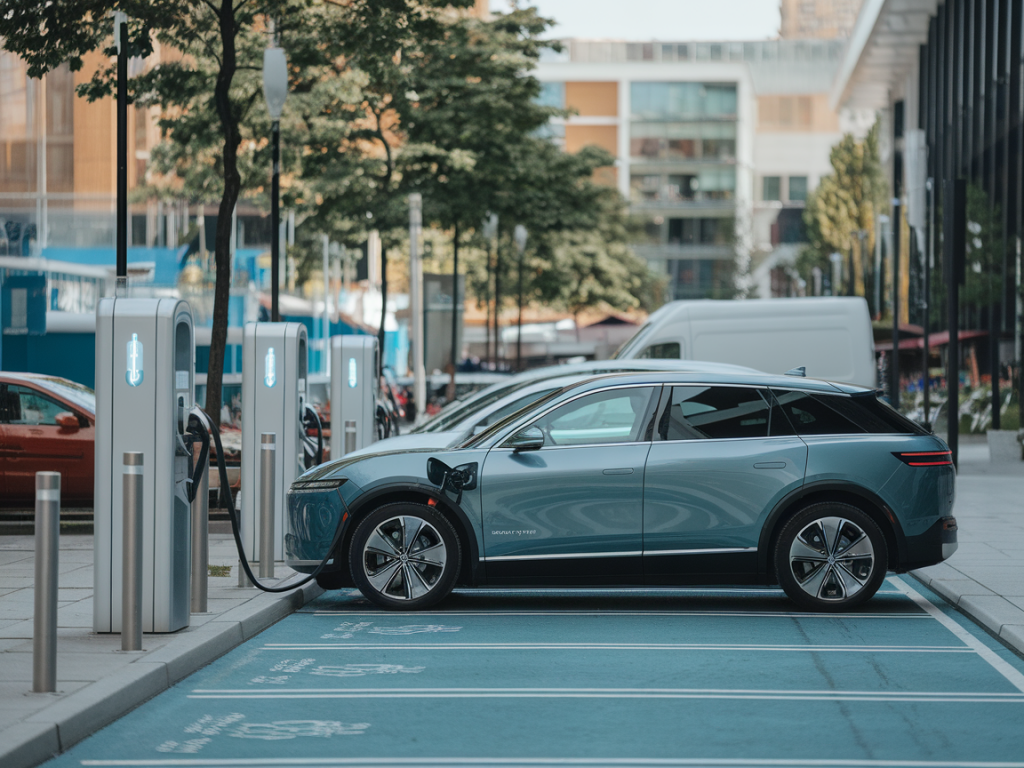
Electric vehicles (EVs) are no longer a futuristic concept; they’re a part of our present and undoubtedly, our future. As much as the adoption of EVs has surged, the technology behind charging them is evolving equally rapidly. With the global push towards sustainability and the legislative push for net-zero emissions, the electric vehicle charging ecosystem is becoming a focal point of innovation and transformation.
In my years of exploring green technologies, I’ve seen how crucial charging solutions are to the overall success of EV adoption. But where exactly are the game-changing developments happening? Below, I’ve shared five standout innovations currently reshaping the EV charging landscape. These technologies are engineering a smoother, smarter, and more sustainable charging experience—not just for EV owners, but for society at large.
Smart Charging Systems
One of the groundbreaking innovations I’ve been closely following is the implementation of smart charging networks. For many EV owners, the concern isn’t just about access to charging stations but whether the grid can handle the growing number of users. Smart charging addresses just that.
Companies like Enel X and ChargePoint have paved the way by developing chargers that interact with the grid in real-time. These systems use advanced algorithms to optimize when and how energy is delivered to vehicles, taking into account factors like grid demand, electricity rates, and user preferences. Imagine plugging in your EV at night, and your charger automatically ensures that it charges during off-peak hours, saving you money while reducing strain on the grid.
Moreover, smart charging systems can integrate renewable energy sources like solar and wind. For instance, if your home is equipped with solar panels, a smart charger could prioritize the use of your self-generated, green electricity. It’s efficiency and eco-friendliness rolled into one.
Wireless Charging for EVs
Let me ask you this: how often do you forget to plug in your phone to charge? Now imagine you don’t have to worry about plugging in your car. That’s exactly what wireless EV charging aims to solve.
This technology, also known as inductive charging, is beginning to make waves. It uses electromagnetic fields to transfer energy between a charging pad on the ground and a receiver installed on the vehicle’s underside. All you need to do is park your EV over the pad, and voilà—charging starts automatically.
Companies like WiTricity are leading the charge here, quite literally. While still in its early stages, this innovation has tremendous potential, especially in urban areas and for public transportation systems. Think electric taxis or buses continuously charging throughout the day as they pause at designated wireless charging hotspots. It’s innovation as seamless as it gets.
Ultra-Fast Charging (UFC)
Let’s face it—time is of the essence for all of us. One common hesitation for many potential EV buyers is the perceived inconvenience of long charging times. Thankfully, the advent of ultra-fast charging is rapidly dissolving this barrier.
Brands like Ionity and Tesla are leading the race with chargers capable of delivering up to 350 kW of power. To put it into perspective, a 350 kW charger can provide enough electricity to charge your EV for 200 miles in under 10 minutes. Now that’s comparable to the time you’d spend refueling at a conventional gas station.
Powered by innovations in battery technology and cooling systems, ultra-fast charging solutions are also becoming more cost-effective and widely available. With government investments in public EV infrastructure becoming a priority across the globe, we can expect these chargers to become essential features along major highways and in city centers.
Vehicle-to-Grid (V2G) Technology
Here’s a term you might have heard recently—vehicle-to-grid technology. It’s an exciting one because it flips the script on who benefits from charging. Instead of just taking electricity from the grid, V2G allows EVs to send excess electricity back to it. Yes, your car could become not just a consumer but also a supplier of energy.
The concept isn’t just theoretical anymore. Companies like Nissan, with its "Nissan Leaf," have made vehicles capable of bi-directional charging. This means EV owners could sell surplus energy stored in their car batteries back to the grid during peak demand, potentially earning a profit.
But it’s not just about individual benefits. V2G systems can support grid stability, especially during high-demand periods, by redistributing stored renewable energy. Imagine a future where millions of parked EVs collectively act as energy reserves. To me, this is where innovation meets the greater good.
Solar-Powered EV Charging Stations
Wouldn’t it be wonderful if charging your EV didn’t rely on fossil-fueled electricity in the first place? That’s where solar-powered charging stations come in.
Pioneers like Beam Global (formerly Envision Solar) are developing off-grid EV charging stations that harness solar energy. These stations don’t require any connection to a traditional power grid and are often portable, meaning they can be deployed in remote or underserved areas.
Beyond their practical advantages, solar-powered stations are a statement of what sustainable EV infrastructure could look like—a true marriage of renewable energy and transportation. Considering how much sunlight some regions receive year-round, this innovation could significantly shrink the carbon footprint of EV users worldwide.
Moreover, these stations often include energy storage systems that allow them to charge EVs even during nighttime or cloudy weather, connecting the dots between renewable energy and real-world reliability.
The way I see it, these innovations represent more than just technological advancements; they symbolize a fundamental shift in how we think about energy, mobility, and sustainability. With such innovations paving the way, the future of electric vehicle charging isn’t just efficient—it’s smarter, greener, and more empowering than ever.

